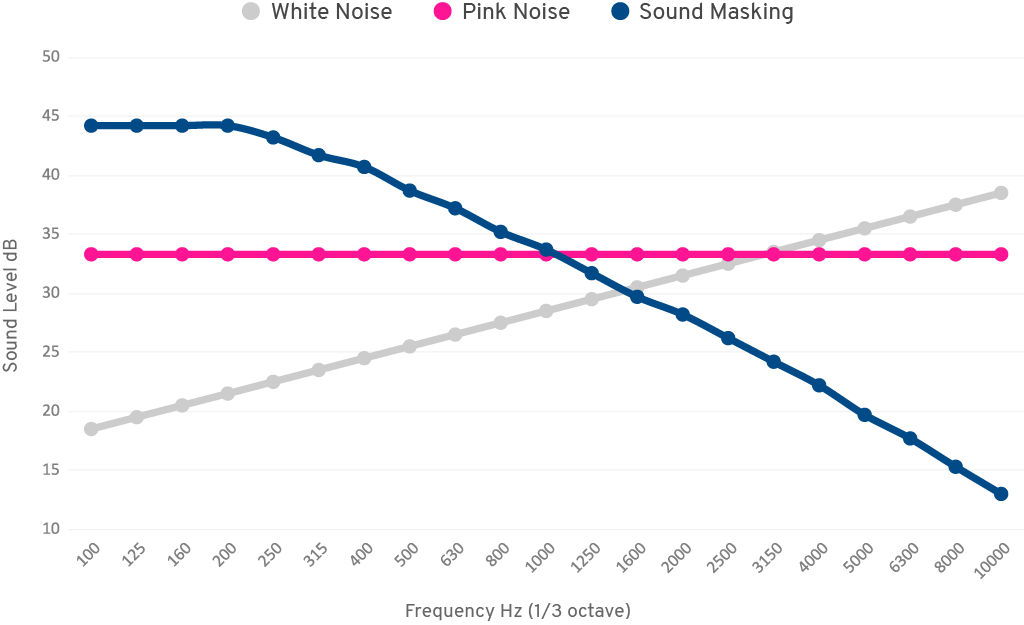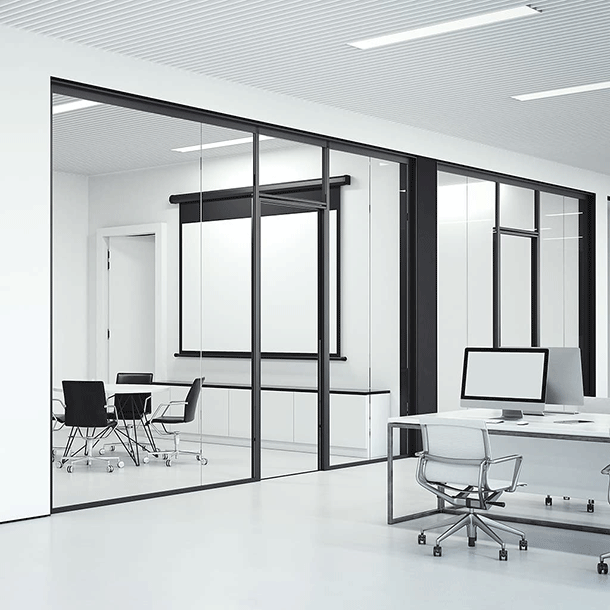In today's professional landscape, establishing an ideal acoustic setting holds paramount importance in enhancing employee comfort, productivity, and overall well-being. Among the various strategies employed to achieve this, sound masking has gained significant attention. However, misconceptions surrounding sound masking still persist. In this blog, we'll delve into the top myths surrounding sound masking in office spaces and provide evidence-based insights to debunk these misconceptions.
Myth 1: Sound Masking is Just White Noise
One of the most common misconceptions about sound masking is that it's simply a form of white noise. White noise is a sound signal that encompasses all frequencies at equal intensity, which can be distracting rather than beneficial. In contrast, sound masking employs a carefully designed spectrum of sound that is tailored to match the frequencies of human speech, effectively rendering conversations less intelligible and reducing distractions. This targeted approach makes sound masking a far more effective solution than generic white noise.
Myth 2: Sound Masking Eliminates All Noise Disturbances
While sound masking can significantly reduce the impact of conversational distractions, it doesn't completely eliminate all noise disturbances. Sound masking primarily aims to improve speech privacy by raising the background sound level. However, it won't cancel out sudden loud noises or highly disruptive sounds. It works best when combined with other acoustic design elements like proper insulation, layout optimization, and absorptive materials to create a comprehensive solution.
Myth 3: Sound Masking is a One-Size-Fits-All Solution
Effective sound masking solutions require careful customization. The acoustic characteristics of each office space vary, including factors like ceiling height, room size, and existing background noise levels. Employing a generic sound masking system without considering these factors can lead to suboptimal results. A well-designed sound masking system is tailored to the specific requirements of the space and often involves an acoustics professional conducting thorough measurements and simulations.

Myth 4: Sound Masking is Expensive and Complicated
While implementing sound masking does require an upfront investment, the long-term benefits often far outweigh the costs. Increased productivity, improved speech privacy, and enhanced employee satisfaction contribute to a positive return on investment. Additionally, advancements in technology have made sound masking systems more user-friendly, scalable, and adaptable. When designed and installed correctly, sound masking systems can seamlessly integrate into the office environment without disrupting day-to-day operations. Try our ROI calculator.
Myth 5: Sound Masking Creates an Unpleasant Environment
Critics of sound masking sometimes argue that it creates an unnatural and uncomfortable auditory environment. However, when properly designed and tuned, sound masking should not be perceived as unpleasant. The goal is to provide a consistent, unobtrusive background sound that blends seamlessly into the existing noise environment. Acoustic experts take into account the preferences of the occupants and design the masking sound to be subtle and soothing rather than intrusive.

Myth 6: Sound Masking Can't Be Measured or Quantified
Contrary to this myth, the effectiveness of sound masking can indeed be measured and quantified. Acoustics professionals use metrics like Articulation Index, Speech Intelligibility Index, and Sound Transmission Class to assess the impact of sound masking on speech privacy and overall acoustic comfort. This data-driven approach allows for continuous improvement and adjustment of the sound masking system to ensure optimal performance.
In conclusion, sound masking is a sophisticated and effective tool for improving speech privacy and acoustic comfort in office spaces. By dispelling these myths and embracing evidence-based design, architects and designers can create environments that foster productivity, communication, and well-being among employees. Sound masking, when properly understood and implemented, is an essential component of modern office acoustic design.





